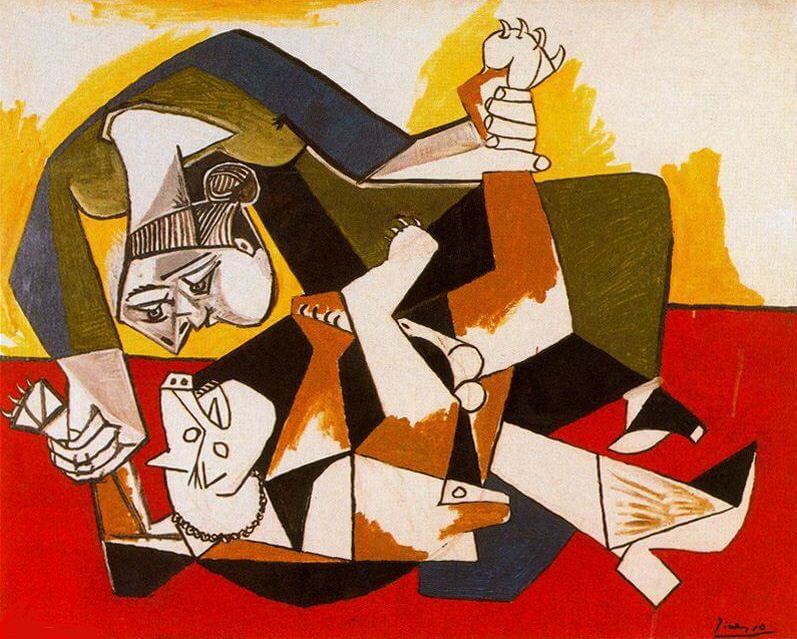Woman with a Dog, 1955 by Pablo Picasso

Picasso pushed his challenge to the traditional system, not only in the forms of art but also in its economy, its operation, its aesthetic. No one can overstate Picasso's efforts on this aspect.
In Woman with a Dog is a painting that is explicitly "in movement". But this movement is not so much expressed as stated in the compensated imbalance of two static forms. The impression the image viewer perceived is more like a snapshot or an impression of concealed movement. In fact, this static quality seems to be an indispensable factor in the coherence of the system. Once it has rejected into the tricks of the image, it is hard for us to see why Cubism should have retained the illusion of movement after depicting the illusion of depth: each constitutes a different aspect of the illusion of reality. Cubist basic principles indicate the painter to depict objects in a "flat, colored architecture," not as the viewer sees them but as they are made.
















